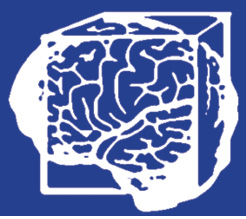By Marco C. Janssen, UTInnovation, the Netherlands

Only when we achieve ownership the buzz words “Transformation” and “Digital” transform into a motivational buzz that drives the change and creates positive results for the digital transformation program.
In today’s businessenvironment the terms “Transformation” and “Digital” have become the new buzz words. It is as if everything has to be transformed and must be digital, irrespective of whether the business is doing well as it is or not. To me, this sounds a lot like a solution trying to find a solution. Doing things for the sake of doing them typically leads to a series of pilot projects and initiatives that can be extremely interesting but in essence frantically try to change a working process leaving a museum of nice to have solutions behind that are never fully deployed.
Have you ever wondered why, if you ask different parts of your business the same question, they come back with a different answer? Or why different groups are trying to do the same or similar activity? Or why the information to take key decisions is not available when required?
As David Robertson, Jeanne W. Ross, and Peter Weill explain in their book Enterprise Architecture as Strategy – Creating a Foundation for Business Execution the key reason is the lack of a foundation. If you do not have created a foundation for your digital transformation then every project or initiative is, as one of my friends once said, is like trying to stick a balcony onto a house that has not been built yet.
For digital transformation to work companies should look at the foundation they have for such a transformation first, and to be able to do that we need to know where we are going.
I think that this is exactly where the problem is and why many transformation programs have struggled to deliver on their promise. What is missing, in my opinion, in a lot of the so-called digital transformation programs is a clear vision, a well-defined set of objectives and a clear strategy that defines what it is that we are trying to transform, why are we trying to transform it, and above all, what it is we are trying to achieve by when through this transformation.
As we are living in a world of uncertainty and rapid change we cannot rely on historic data as the basis for our future plans anymore as things may change along the way. So, the way to setup a strategy, I think, is to consider multiple future scenarios allowing you to set the plan in the right direction, rather than second-guessing or striving for precision.
What this also means is that we have to learn and accept to make decisions with incomplete information, being aware of ambiguity yet being able to navigate unforeseen events that may arise.
However, we need to be realistic as there are many reasons to deviate and get trapped in wishful thinking. This means we must place a high value on data and facts that are grounded in realistic expectations as these are the basis for the design and the plans, budgets, and performance.
In the end the organization needs to own the transformation which includes for people having the freedom and autonomy in making decisions and taking personal responsibility for outcomes. Ownership shows in the drive for a shared goal and is realized when there are shared values, pride in the organization, and belief that everyone’s contribution and participation matter.
This is probably the biggest challenge for any transformation program. How to get people to buy into the vision, the objectives, the journey and most importantly for them to feel the need to be part of the program and be proud of the results. I believe that only when we achieve ownership the buzz words “Transformation” and “Digital” transform into a motivational buzz that drives the change and creates positive results for the digital transformation program.
Biography:

Marco C. Janssen is the CEO of UTInnovation LLC and the former Director of the Smart Grid PMO at the Dubai Electricity and Water Authority. He received his BSc degree in Electrical Engineering from the Polytechnic in Arnhem, Netherlands and has worked for over 27 years in the field of Smart Grid, Protection, Control, Monitoring, Advanced Metering Infrastructures, Distribution and Substation Automation. He was a member of IEC TC57 WG 10, 17, 18, 19, the IEEE PES PSRC and CIGRE B5 and D2 WGs. He was the convenor of D2.35 and editor of the Quality Assurance Program for the Testing Subcommittee of the UCA International Users Group. He holds one patent, has authored more than 58 papers, is co-author of four Cigre Technical Brochures and two books on Smart Grids and Electrical Power Substations Engineering and is the author of the “I Think” column in the PAC World magazine.








